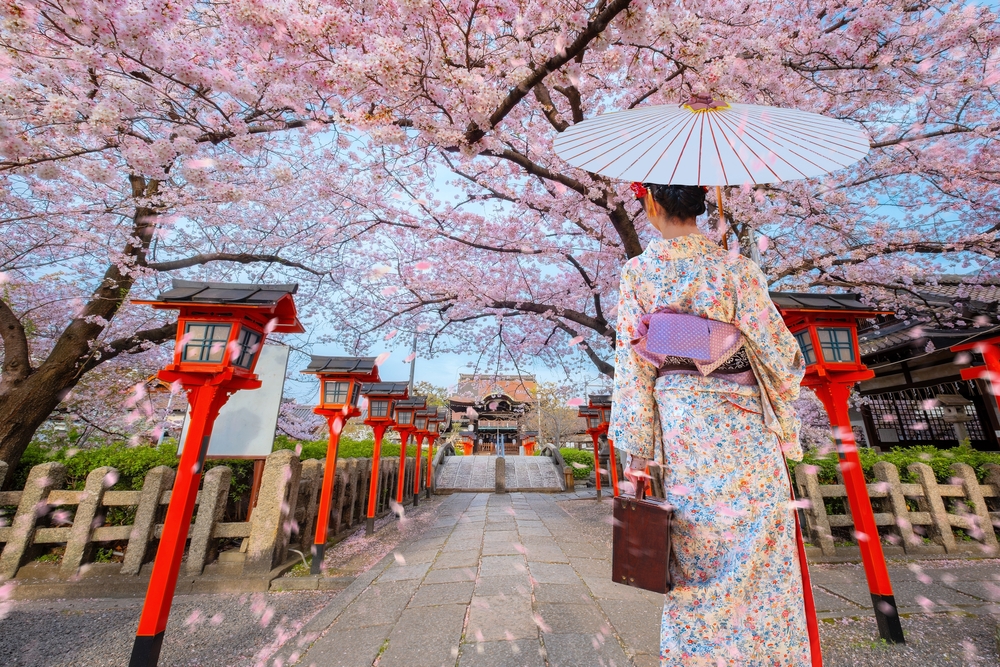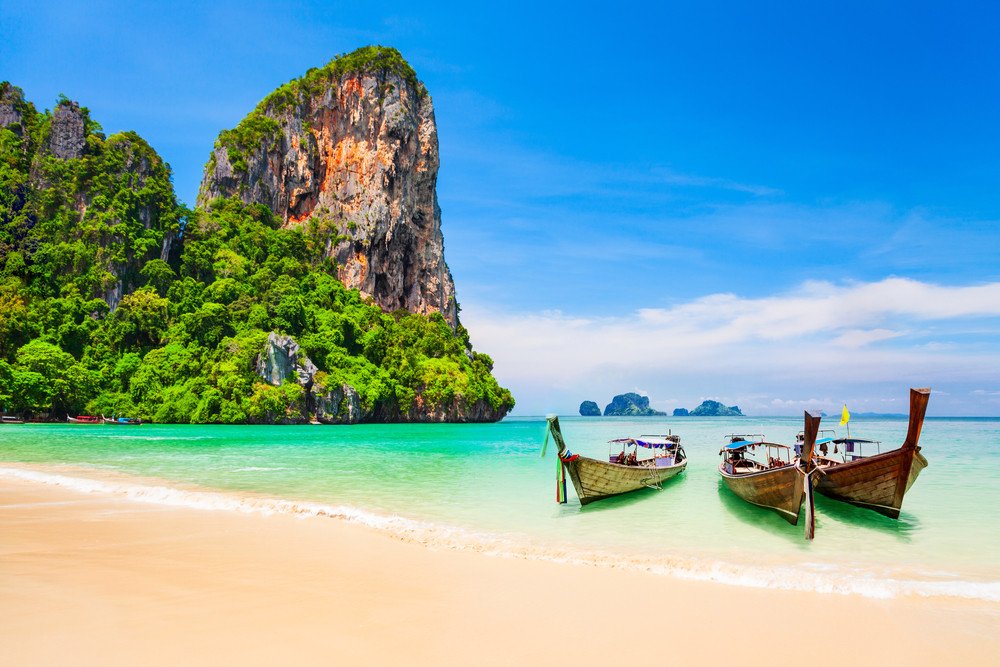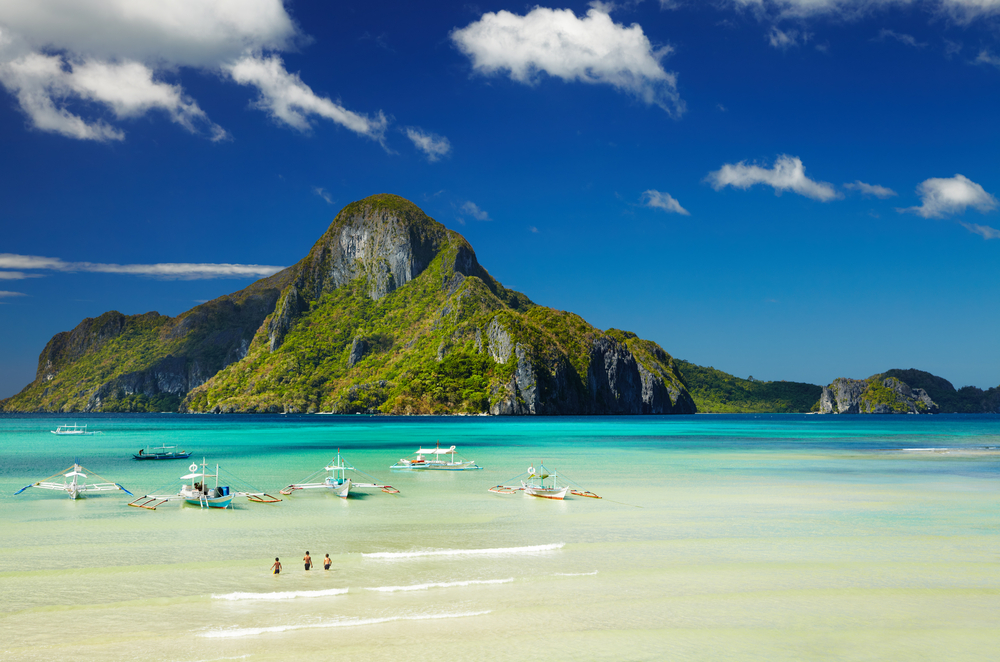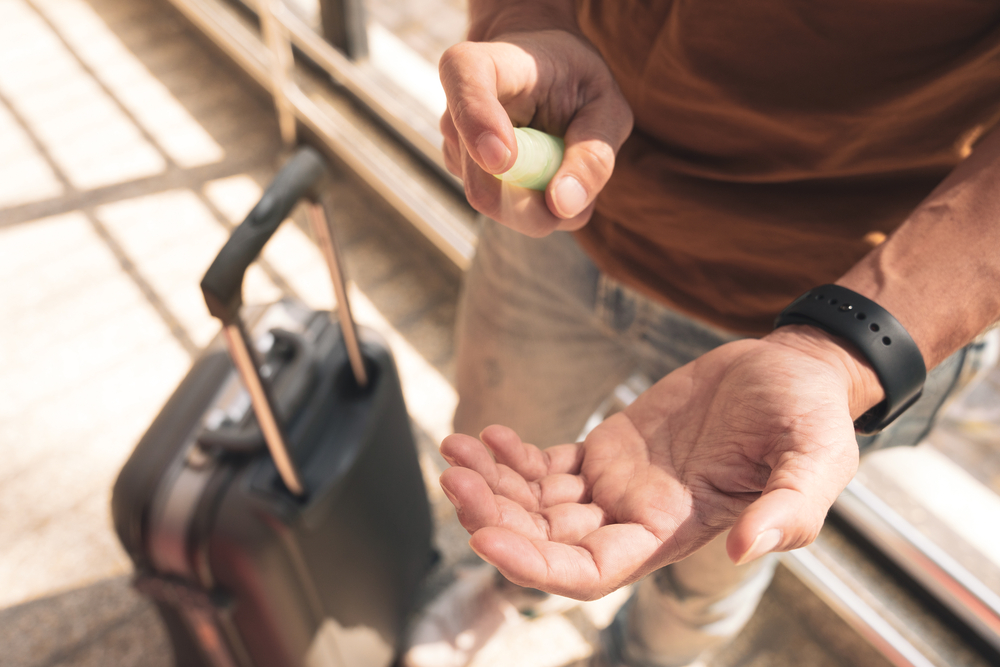Whether you want to see the cherry blossoms or avoid the crowds, these are the best times to visit Japan.
A snowy getaway in Hokkaido, a beach vacation in Okinawa, or a photography trip to capture cherry blossoms in Tokyo — the best time to visit Japan depends entirely on what you want to do when you arrive.
As a country with a seemingly endless amount of activities and festivals on offer throughout the year, there really isn’t a bad time to visit. But if you’re interested in shrine-hopping in Kyoto, seeing the pink hues of cherry blossoms, or gazing at fall foliage, you’ll want to carefully time your visit. Here are the tourist seasons to be aware of when planning your trip.
- High Season: March to May and September to November
- Shoulder Seasons: June to August and December
- Low Season: January to March
Use this guide to find the perfect time for your dream trip to Japan.
Best Times to Visit Japan for Smaller Crowds
Travelers from all over the world come to Japan to admire the cherry blossoms, so it should come as no surprise that sakura season (late March to April) marks the busiest time for tourism. Domestic travelers also take advantage of Golden Week (a series of four national holidays in Japan) from the end of April to the beginning of May. You’ll want to avoid visiting during that time, unless you meticulously plan ahead, since trains, hotels, and sightseeing spots can often be overcrowded or booked out entirely. Stunning foliage tends to draw crowds in the autumn, especially when the leaves reach their colorful peak between mid-October and early November.
If you’re looking to avoid the crowds, plan your visit during the rainy season, which typically begins in June and lasts until mid-July. Though this period tends to be humid and drizzly, it’s one of the best times to enjoy the popular tourist spots without the crowds. Japan is also quieter between January and March, making it a perfect time to pair sightseeing with snow sports and onsen visits.
Best Times to Visit Japan for Good Weather
Japan, while not especially large, is surprisingly varied when it comes to weather. Frigid winters at the northernmost tip of Hokkaido make the subtropical islands of southern Okinawa seem worlds away. The rainy season typically runs from early June to mid-July throughout most of the country — Tokyo included — except in Okinawa where showers begin in early May. Meanwhile, in Hokkaido, summertime brings mild temperatures and blue skies.
If you aren’t hitting the ski slopes, March to May and September to November are generally considered the best times to visit the country for pleasant weather. That’s when travelers can find the iconic cherry blossoms that seem straight out of a postcard, or, on the other hand, vivid autumnal leaves. During these seasons, rainfall is minimal, skies are clear, and temperatures are mild, ranging from 50 to 70 degrees Fahrenheit most days.
For those not averse to heat and humidity, summer brings a different tempo to Japan. It’s a time of year perfect for exploring nature — ideally, somewhere cool up a mountain or as far north as possible. The lusciously cooler climes of Hokkaido are heaven in the summer, with rainbow-bright flower fields and countless outdoor activities, from hiking to horseback riding.
In the winter, the northernmost prefecture of Hokkaido is undeniably the best place to ski or snowboard, but areas outside of Tokyo, such as Niigata, are only a Shinkansen ride away and boast great alpine resorts. Those who prefer the warmth would do best to fly south to Okinawa during the winter for a more subtropical climate.
Best Times to Visit Japan for Lower Prices
Japan has a reputation for being a pricey destination, but there are times of year when it’s less expensive to visit. During the low season, between January and March, you may be able to find deals on airfare and hotel rooms. Prices tend to spike during the holiday season, especially around the New Year, so it’s best to avoid the beginning of January if you’re trying to save money.
Costs rise again in late March and April for the peak cherry blossom season and remain high throughout the spring and summer. For your best bet of scoring reasonably priced accommodations while also enjoying mild weather, aim to visit in September or October.
Best Times to Visit Tokyo Disneyland
Spring and autumn are generally the best, most temperate times of year to visit Tokyo Disneyland. It’s worth avoiding weekends and national holidays — particularly Golden Week, which is one of the busiest periods at the theme park. The extreme heat in July and August can make it difficult to enjoy outdoor attractions. On the other hand, the temperatures rarely exceed 50 degrees in January and February, making those months less popular.
The period from mid-September through the beginning of December offers a combination of pleasant weather, thinner crowds, and seasonal entertainment. Spooky decorations and fall-themed events can be enjoyed in the weeks leading up to Halloween. Starting in November, the theme park celebrates the holiday season with its Christmas at Tokyo Disney Resort programming, which includes magical parades, characters in festive costumes, and heart-warming decorations that help offset the chill in the air.
Best Time to Visit Japan for Cherry Blossoms
If you’re hoping to time your visit to Japan with the peak cherry blossom season, bear in mind that the bloom dates vary depending on the weather. The cherry blossom front — meticulously studied and broadcasted across the country — edges its way up, starting at the southernmost tip of Japan as early as January. The best times for cherry blossoms in Kyoto, Tokyo, and the surrounding regions are often from the last week of March to the first week of April. And for more northerly cities such as Sapporo? Don’t expect to see any pink at least until May.
Best Times to Visit Japan for Food Lovers
Japan is a great destination for food lovers year-round — but it’s also seasonal. So, if you have a favorite Japanese cuisine or ingredient, it’s worth finding out when to visit to avoid missing out completely. Summertime treats include light, cool sōmen noodles, kakigōri shaved ice, and delicious unagi (eel); autumn is heaven for matsutake mushrooms, sweet potatoes, and sanma (Pacific saury); winter is all about warming nabe hot pots, citrus fruits, and kaki (persimmon); and spring goes hand in hand with sea bream, takenoko (bamboo shoots), and sakura mochi rice cakes.
Worst Times to Visit Japan
While there’s no bad time to visit Japan, some months are worse than others, depending on your goals. If pleasant weather is a priority, avoid the rainy season, which typically runs from early June to mid-July throughout Japan (except in Okinawa, where it begins in May). This period is often preceded by extreme heat and humidity, with cities such as Tokyo and Kyoto being especially unbearable during the peak summer months of July and August.
Those looking to save money and avoid crowds should steer clear of Golden Week, which runs from the end of April to the beginning of May. This is when many domestic travelers take their holidays, so expect higher prices, less availability at hotels, and larger crowds.



